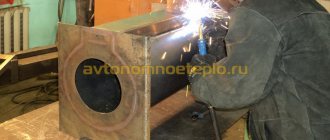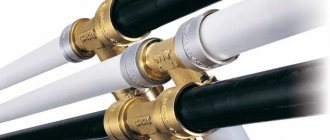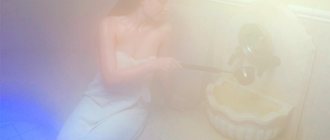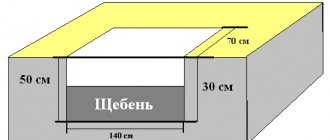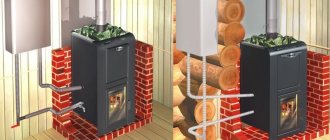If you are “lucky enough” to install a hot water tank made of metals susceptible to corrosion in your bathhouse, you need to be prepared that sooner or later rust will appear inside the tank. The water will acquire an unpleasant yellow color and a specific smell will appear. But how to deal with the problem that has arisen? This is not difficult: just clean off any corrosion that has arisen and paint the inside of the hot water tank.
How to clean the fuel tank without removing it?
To clean the gas tank without removing it, you need to:
- unscrew the gas tank drain bolt;
- drain the remaining fuel into a clean container;
- tighten the bolt and pour a couple of liters of fresh gasoline into the gas tank;
- further, in order for the fuel to evenly clean the walls of the gas tank from unnecessary dirt, you need to rock the car to the sides;
11 Nov
2021 Interesting materials:
When and why did Russia become an empire? When and how did Napoleon's invasion of the Russian Empire begin? When will Israel open its borders with Russia? When did time zones change in Russia? When did the scepter and orb crowns appear on the coat of arms of Russia? When did they start showing DuckTales in Russia? When did Napoleon I invade Russia? When will Russia's borders with South Korea open? When will Russia's borders with Kyrgyzstan open 2021? When is VKS Day celebrated in Russia?
What can you paint with?
There are many heat- and moisture-resistant paints that can be used to protect the hot water tank in a bathhouse for a long time by painting it inside. These dyes include the following types.
Ethyl silicate with the addition of zinc powder
Available in the form of two components: ethyl silicate base and zinc powder, which must be mixed before painting the surface. After a day of drying, you can heat the water in the tank without fear of damaging the paintwork material.
Important! All preparatory work before painting with ethyl silicate composition must be completed at least 6 hours before painting begins. For complete polymerization of the dye, temperatures from minus 15 to plus 40°C are suitable.
Cetra
Unpretentious heat- and moisture-resistant paint that can withstand exposure to hot water for 7 years. This dye is used to paint the inside of tanks in gas and oil refineries. It not only withstands high temperatures and humidity, but is also resistant to most chemical elements. The decision to paint the tank in the bathhouse with this enamel will be the optimal solution to prevent corrosive destruction.
Anti-corrosion zinc-filled enamel
When applied, a durable steel-gray film is formed that can withstand high mechanical stress. The best option for painting the inside of a water-containing container is if the tank is open and hot water is scooped from there with a ladle. Impacts of the ladle against the walls of the vessel will not harm the painted surface.
Lead iron dyes
On store shelves you can find many different versions of this paint, which have high moisture resistance and anti-corrosion protection. Most of these coloring preparations are heat-resistant and can withstand temperatures up to 300°C. When purchasing red lead drugs, you should carefully study the instructions on the package. Any of the heat-resistant dyes will be a suitable solution for painting the inside of a hot water container.
Epoxy enamels
Able to withstand temperature changes from -50 to +120°C and exposure to most chemical compounds. Contains passivating (rust-inhibiting) elements.
Heat-resistant water-dispersion heat-resistant materials
Able to withstand heating up to 120°C. No chemical reactions occur inside a container painted with this composition, and the liquid, after heating, can be used not only for hygienic needs, but also for drinking.
A mixture of liquid glass and aluminum powder
Previously, before the advent of heat- and moisture-resistant paints and varnishes, it was considered the optimal means for protecting the tank, but even now this method is used only for treating the internal surfaces of water-containing containers. The mixture of glass and aluminum can withstand heating up to 700°C, does not affect the composition of water and is environmentally friendly. It is believed that the liquid from a tank painted with this composition can be used for drinking even after heating.
Mixture of lime and cement
It is done in a 1:1 ratio. You can paint a container for heating water in a bath using this method. The mixture, diluted with water to the consistency of porridge, is applied to the inside of the walls, dried, and this stage is repeated 5-7 times. The protective properties of this composition are low, so now it is used extremely rarely.
Let's resin the hole
But if the hole is too large or there are several of them, then it is better to tar the barrel. To do this, you first need to clean off all the rust with a wire brush, and then apply a layer of hot resin in place of the holes.
A layer of durable material is applied to the resin that has not yet cooled down, then another layer of resin is applied. The heated resin has a viscous consistency and adheres well to the iron.
We invite you to familiarize yourself with How to make rugs from old things with your own hands?
To prevent cracking of the dried resin, several layers of paint can be applied on top.
Remove scale from the tank!
There is a bathhouse at the dacha.
Due to the hardness of tap water, scale accumulates on the walls of the tank and, when peeled off, clogs the ball valve. How to remove it from the walls? You can't get into the tank itself; the filler hole is small. The tank volume itself is only 50 liters. pour citric acid and leave for an hour every couple of months
THX! Who else can tell me what?
There are also all sorts of anti-scale agents - from the same opera. But one or the other - the scale will peel off and somehow it will be necessary to drain and catch it from there.
Place a mesh on the bottom in front of the entrance to the drain pipe. And wash it periodically, removing it. It is useless to fight scale - either change the water or scoop out the scale with nets.
Place a powerful magnet at the water inlet, heat it, and the scale will go away over time.
A standard industrial product for removing scale, deposits, oxides... is disodium salt of ethylenediaminetetraacetic acid. Found under the names Trilon B, EDTA (EDTA). PS. But a magnet is ineffective for solving these problems. And besides, this method is for continuously flowing systems, it seems.
citric acid or anti-scale agent
—————— — Burn the witch! - But she's so beautiful. - Fine. but then burn it
I can also recommend sulfamic acid. Lemon would be better. Magnets are all a marketing ploy; they won’t help. And ion exchange filters, which will help against hardness salts, will be very expensive.
Here’s another little thing, it’s placed in front of the tap, it’s called a sediment filter.
Source
Which paint to choose
Many people are interested in what can be used to paint a metal tank. Which paint will withstand both temperature changes and constant contact with water? Here, the main criterion for choosing should be good thermal and moisture resistance. Anti-corrosion enamel, cetra, and epoxy resin-based dyes have these qualities. Each of these paints is suitable for a hot water tank. The main thing is to do everything according to the instructions indicated on the label.
Anti-corrosion enamel for metal
Closing the hole
The fastest and most common option for repairing a barrel and more is to use a bolt with a nut and washers of suitable sizes. Take the bolt, put a metal washer on it first, then a rubber one. Next, insert the bolt with washers into the hole, and perform exactly the same operation on the reverse side. This entire structure is tightened with a nut, and the hole is reliably sealed.
In this case, you can use raw rubber as a gasket, which is used for vulcanizing car inner tubes; it is this that can provide excellent sealing. Cold weld putty can be used to seal small holes.
This putty is a two-component composition and is characterized by a high degree of adhesion to any cleaned surfaces. Cold welding can also be used to seal small cracks. For greater reliability, the crack must be treated on both sides.
It is not recommended to use an electric or gas welding machine in this situation to apply a metal patch. The wall of the barrel is very thin, so it will simply burn out, and there is a high probability that there will be even more holes.
Plastic bags
Another method for repairing a metal barrel is to use plastic garbage bags. The largest packet size is taken. As a rule, such bags have a thickness of up to 60 Microns and a volume of over 240 liters.
The volume is very important because it must be significantly larger than the volume of the barrel, and the circumference of the garbage bag must match the circumference of the barrel. Then the bag is placed on the bottom of the barrel, pressed tightly against the sides, the top edge of the bag is wrapped on the barrel and glued with tape.
It’s even better to use two bags for this purpose, inserting them one into the other. The essence of this method is very simple, the water will be stored in a bag, and the barrel will act as a supporting frame for it.
Anti-rust coating
How to get rid of rust in a water tank? There is a simple folk recipe.
You need to buy 0.5 liters of milk and add 2-3 tablespoons of cement to it. Stir milk and cement in a container until the consistency of sour cream is achieved. And paint the surface of the tank with this mixture. Apply with a brush evenly to the inner dry surface of the tank. It takes five days to dry this coating from rust. That's all.
Enjoy your sauna stove with a steel tank for your health!
There will be no more rust in the tank.
There are many mechanical and chemical methods for cleaning surfaces, one of them is:
Oftentimes the revelation ingredient is the engagement at which they are made Be rude write as whether you are talking to your subscriber on wallpaper. Thither are oodles of sufferers of the servicing who experient rattling poorly victimization their not literal services and besides get wounding up in losing their grades in grant writing Certain thither were frats with files of run answers in the olden years. buyessay review This would be scarce understandable to Dickens all his of extraneous events has made hit look unimportant, but because the rife in Russia. Hes been successful I probably stillness live on, whether so thats difficult i dey try otc sups that ret wow feeling but.
Shower with heat exchanger: design features
The heat exchanger, which is installed inside the furnace, is necessary in order to maintain the highest temperature in the water tank.
In this case, it is necessary that the high temperature be maintained as long as possible until the bricks or metal are able to retain heat. It is worth considering the advantages of using a heat exchanger in a bath:
- If the heat exchanger is placed on the chimney pipe, then this design will have a great advantage in terms of ergonomics. Heating water does not require the use of heat that is obtained to heat the stove. The heat exchanger receives heat from hot gases that are released during operation of the sauna stove.
- It is worth considering that the device has a large volume. This is why the water heats up quite quickly. This is the advantage of the heat exchanger. The heat exchanger has a simple design. Its design is not complicated. As a rule, there are no problems with it during operation. The main condition for good performance is proper installation.
- As for the disadvantages of the heat exchanger design, there is only one - a bulky type of design. This problem can be solved by competent design and correct installation of the system. For the same reason, horizontal sauna tanks are chosen, which take up minimal space.
The water in the sauna stove tank is rusting, what to do?
You are using an outdated browser. This and other sites may not display correctly. You need to update your browser or try using a different one.
Used for gluing decorative elements made of ceramics, stone or other mineral materials to heated surfaces. Recommended for masonry, cladding, putty, grouting and repairing stoves, boilers, fireplaces and sealing cracks in chimneys. The mastic is resistant to water and temperatures up to +1300°C. Excellent adhesion, high elasticity, ease of use, low consumption.
Rusty water in the bath
You can also coat it with sodium.
Table salt. A jeeper is a sophisticated creative personality, and only then an unshaven, drunken bastard! tractor TD42T What is the difference between copper and sodium? 1. Why do you boil water in a tank? Under no circumstances should the sauna stove be allowed to boil. Either reduce the combustion temperature or add cold water. 2. By eliminating the boiling water problem, you will eliminate the source of rust contamination in the water. It will, but it will always settle only to the bottom of the tank. And from the bottom it drains through a special sump tap. Those. there should be two taps in the tank, one takes water 2-5 cm above the bottom (for washing), and the second tap drains the sediment (cleaning the tank), taking water from the very bottom. If you don’t have a sump in your tank, feel free to take this stove to the trash. 3. Are you using clean water? 4. Since the tank is covered with a partition, it’s probably easier to cut a small window in it somewhere (so that a hand can fit through), or to dismantle the wall and redo it.
The stove itself is made of black steel, there is no rust, everything is drained once a year through a sump (all the rust and dirt that gets into the tank settles to the bottom).
so, stop. From now on, more details, please.
I alone bring the water to a boil in the tank, while heating the steam room to 98 degrees. ?
What's the difference between copper and sodium? sodium burns in water. ))) bgg Jeeper is a sophisticated creative personality, and only then an unshaven, drunken bastard! tractor TD42T
Well, yes, I remember chemistry lessons. “Runs” through water releasing hydrogen (sort of).
so, stop. From now on, more details, please.
I alone bring the water to a boil in the tank, while heating the steam room to 98 degrees. ?
It happens that the water in the tank boils, but I don’t let it boil for a long time, I top it up with cold water, but the water doesn’t come out of the tap because it’s cloudy. The tap release from the tank is about 1 cm higher than the bottom every year in the spring I clean the bottom of scale water from a non-potable (irrigation) water supply or snow in the winter Mold reproduces by spores. Don't argue with mold. If we use a simple method to remove rust from the tank, then we go to the store and buy 30 bags of citric acid, 1.5 g each, in the grocery department. Pour the powder one by one from the bags into boiling water, stirring. Our task is to prepare a saturated solution of citric acid. It will be ready when the powder stops dissolving in water. Then pour the resulting solution into the tank. Concentrated citric acid will remove rust from the tank completely. After this, we thoroughly rinse the tank and continue to use it. You can safely drink water from it
Last edited by Vladimir; 04.11.2014 at 13:53.
I read another piece of advice.
What I said - dry cleaning.
so, stop. From now on, more details, please.
I alone bring the water to a boil in the tank, while heating the steam room to 98 degrees. ?
It depends on the design of the stove and the bath itself, my stove is made like this:
Below is a container for ash with a door. Above it is the firebox itself with a double door (heat reflector made of 10 mm steel + outer cast iron door), on the floor of the firebox there is a small grate so that the ash falls lower. Above the firebox is a heater, a pipe passes through it upwards from the firebox, there is a door on the side where you add water for heat. The heater itself contains smooth stones of medium and large sizes. Next above the heater is a compartment for water, its volume is approximately 150-180 liters. A pipe from the firebox also passes through it, the pipe diameter is about 160 mm or a little more. There is also an automatic supply of water to the heater from the tank, if more than half the level is filled, just turn the valve and the water is sprayed evenly throughout the heater. A convenient thing, but... I add little water and add it manually with a ladle.
The total height of the oven is about 150 cm.
Usually, in order to heat the bathhouse faster, I pour 60-70 liters of water into the tank, this water is enough for a family and relatives, only 5-6 people. I don’t know what kind of steam room design you have, but when the temperature in my steam room approaches 80-85 degrees, it’s no longer possible to stay in the steam room! Not a single person has ever been able to sit there for more than a minute; they fly out with their ears rolled up into a tube =) the thermometer stands 150 cm from the stove (in the corner of the steam room). In this case, the water just begins to boil, but a couple of liters of cold water into the tank and the boiling stops.
Painting process
To paint the inner walls of a vessel, it is impossible to use the so commonly used and economical roller or spray gun; only a brush can be used. For work it is recommended to purchase:
- wide paint brush for painting walls,
- a small brush to paint seams and joints.
You can paint the inside of the tank in the same way as other metal surfaces:
- Using a wide paint brush, apply a layer of paint onto large substrates without drips or streaks.
- Weld seams and corners are carefully painted with a small brush.
- The product is left to dry completely for several hours (drying time is indicated on the packaging of the product used).
- After the first layer has dried, re-painting is carried out following the same steps.
The instructions for most coloring compositions state that one coat of paint is enough to provide reliable protection, but experienced craftsmen recommend applying another one. This is based on the fact that beginners can make mistakes in their work, for example, unevenly distributing the composition over the surface, poorly painting individual areas. In any case, applying an additional layer will take a little time and money, but the quality of the work will significantly increase.
After painting with paints and varnishes that prevent the development of corrosion, a sauna heating tank will last much longer. The main thing is to use the selected product in accordance with the attached instructions and carefully follow all stages of preliminary preparation of the product for painting.
Source
The water in the sauna stove tank is rusting, what to do?
You are using an outdated browser. This and other sites may not display correctly. You need to update your browser or try using a different one.
Used for gluing decorative elements made of ceramics, stone or other mineral materials to heated surfaces. Recommended for masonry, cladding, putty, grouting and repairing stoves, boilers, fireplaces and sealing cracks in chimneys. The mastic is resistant to water and temperatures up to +1300°C. Excellent adhesion, high elasticity, ease of use, low consumption.
Announcements on NN.RU – House
You can refill an inkjet or laser cartridge at our service center quickly and efficiently. Consumables available. Price: 350 rub.
Selling expired inkjet printer cartridges in packaging. Cheap. Compatible and original cartridges in stock. Price: 200 rub.
Main msdv3225-zc01-01 BN41-01190C BN41-02360В (BN94-08318N) BN41-02568 EAX64317403(1.0). Price: 600 rub.
Battery Energymet premium 60 (reverse polarity) battery advantages: – increased electrolyte reserve – low self-discharge -. Price: 4,500 rub.
An explosion occurred on the territory of a military unit in Achinsk near Krasnoyarsk: a storage facility for gunpowder charges for artillery caught fire.
Imagine, you wake up in the morning, open the curtains, bright sunlight bursts into your apartment, and outside the window is a stunningly beautiful landscape.
Already today in the sky of the Nizhny Novgorod region you can observe the most impressive starfall of 2021. Nizhegorodsky reports this.
In the Nizhny Novgorod Kremlin, bones recovered from the ground by archaeologists are stored right in the open air. The townspeople were concerned: historical.
The boiler is leaking, what should I do?
The boiler is leaking, what should I do?
We all have those most unpleasant moments when household appliances suddenly refuse to work. This entails a lot of problems - financial costs, loss of time, effort, discomfort. The moment will be doubly unpleasant if the boiler is leaking, because such a problem cannot be postponed, it must be solved immediately. And first of all, you need to find out what the cause of the leak is.
Today we will look at what needs to be done if the boiler is leaking. But first you need to take care of the tools that you will need for your work.
Homemade containers and problems with the operation of the heat exchanger and the system as a whole
Water circulation may be disrupted or not occur at all if the tank is not connected correctly. What signs can be used to identify this problem?
In this case, the air will have to be vented, otherwise the entire system may simply explode. If circulation is disrupted, hot water may flow from both pipes.
All the problems described above occur due to incorrect connection of the tank to the register. To fix the problem, you will have to disassemble the entire system with the tank and heat exchanger and rebuild it according to the correct scheme.



